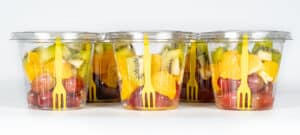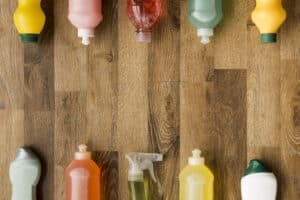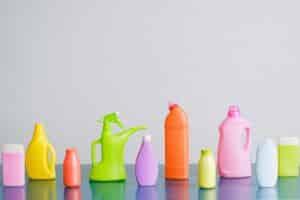In the ever-evolving world of business, adaptability is key. As market trends and consumer preferences shift, businesses need to stay ahead of the game and adjust their strategies accordingly. This holds in the packaging industry as well, where the demand for plastic jars with lids in bulk has been on the rise. Wholesale plastic jars have become a popular choice for businesses looking for flexible packaging solutions that can meet their evolving needs. Let’s explore why plastic jars are the perfect adaptive packaging solution in the B2B sector.
Table of contents
The versatility of plastic jars
When it comes to packaging, versatility is crucial. Plastic jars offer a wide range of sizes, shapes, and designs, making them suitable for a variety of products across different industries. From personal care products and food items to nutraceuticals and pet care products, plastic jars can accommodate various contents. This flexibility allows businesses to cater to changing market trends and consumer preferences without having to invest in different types of packaging.

Customizable solutions
One of the biggest advantages of plastic jars is their ability to be customized. Whether it’s the color of the jar, the shape of the lid, or the branding and labeling options, businesses can tailor their plastic jars to align with their brand identity and target audience. This level of customization not only enhances the visual appeal of the product but also helps businesses stand out in a crowded marketplace.
Cost-effective option
For businesses operating in the B2B sector, cost-effectiveness is always a consideration. Plastic jars, especially when purchased in bulk, offer a cost-effective packaging solution. They are generally more affordable compared to other packaging materials such as glass or metal. Additionally, their lightweight nature helps reduce shipping costs, which can be a significant advantage for businesses that transport their products over long distances.
Durability and protection
Another key factor to consider in packaging is durability and protection. Plastic jars are known for their durability, ensuring that the products inside remain safe and intact during storage and transportation. They are resistant to breakage and can withstand various environmental conditions, making them ideal for long-term storage. The lids of plastic jars provide an additional layer of protection, sealing the contents inside and preventing leakage or contamination.
Meeting sustainability goals
While the focus of this article is not on sustainability, it is important to note that many plastic jars are now being manufactured using recycled materials or are recyclable themselves. This allows businesses to align their packaging choices with their sustainability goals and reduce their environmental impact. By choosing plastic jars made from recycled materials or encouraging their customers to recycle the jars after use, businesses can contribute to a more sustainable future.
Finding the right supplier for wholesale plastic jars
Once you have decided to incorporate plastic jars into your packaging strategy, the next step is to find a reliable supplier that can meet your wholesale needs. Here are some essential factors to consider when selecting a supplier:

Product quality and safety
When it comes to packaging, the quality and safety of the products are of utmost importance. Look for suppliers who prioritize quality control and have certifications to ensure that their plastic jars meet industry standards. This will give you peace of mind knowing that your products will be securely packaged.
Customization options
In the highly competitive B2B market, customization can be a game-changer. Find a supplier that offers customization options for your plastic jars, such as branding, labeling, and unique designs. This will allow you to create packaging that aligns with your brand and stands out on the shelves.
Pricing and discounts
As a business, it’s essential to find a supplier that offers competitive pricing for their wholesale plastic jars. Compare prices from different suppliers and negotiate discounts for bulk orders. This will help you maintain healthy profit margins and offer competitive prices to your customers.
Minimum order quantity (MOQ)
Check the supplier’s minimum order quantity (MOQ) to ensure it is in line with your inventory needs and budget. Some suppliers may have high MOQs, which can be challenging for small businesses or those just starting. Find a supplier that offers flexible MOQs that accommodate your specific requirements.
Timely delivery and logistics
Efficient logistics and timely delivery are crucial in the B2B sector. Look for suppliers that have a reliable and efficient distribution network to ensure your wholesale plastic jars are delivered on time. This will help you meet your customers’ demands and avoid any disruptions in your supply chain.
Customer reviews and support
Before finalizing your supplier, take the time to read customer reviews and testimonials. This will give you valuable insights into the supplier’s reputation, customer service, and reliability. Choose a supplier that has positive reviews and a track record of excellent customer support.
Conclusion
In the fast-paced B2B industry, adaptability is key. Wholesale plastic jars provide businesses with the flexibility and versatility they need to stay ahead of market trends and meet evolving consumer demands. By finding the right supplier, you can ensure that your packaging strategy aligns with your brand image, while also maintaining product quality, competitive pricing, and efficient logistics. So, take the time to research and choose a reputable supplier that can fulfill your wholesale plastic jar needs and help your business thrive in the ever-changing market.
FAQs
1. What are the benefits of plastic jar packaging?
Plastic jar packaging offers a range of benefits, including its lightweight nature, making it easier to handle and transport, and its durability, as plastic jars are less prone to breakage than their glass counterparts. Cost-effectiveness is a notable advantage, as plastic manufacturing is often more economical, leading to affordable packaging options. Plastic jars are versatile, available in various shapes and sizes, and can be transparent, allowing consumers to see the product.
Additionally, their insulating properties make them suitable for products requiring temperature stability. While plastic jars have these advantages, careful consideration of the specific product and environmental impact remains crucial in packaging choices.
2. How do you test the quality of plastic?
Testing the quality of plastic involves various methods to assess its physical, chemical, and mechanical properties. Visual inspection checks for defects, while density measurement ensures compliance with standards. Tests like Melt Flow Index assess processability, tensile testing evaluates mechanical properties and impact resistance checks the material’s ability to withstand sudden force.
Chemical resistance, thermal analysis, and UV stability tests provide insights into how the plastic interacts with different conditions. Additional assessments include flammability, shore hardness, water absorption, and other specific tests depending on the type of plastic and its intended application. Adhering to industry standards ensures consistent quality in plastic products.
3. What plastic is food safe?
High-density polyethylene (HDPE), low-density polyethylene (LDPE), polypropylene (PP), and polyethylene terephthalate (PET) are commonly considered food-safe plastics. These materials meet regulatory standards for food contact and are widely used in packaging for food and beverages.
4. How is plastic better than glass?
Plastic offers several advantages over glass, including its lighter weight, durability, and cost-effectiveness. Plastic’s design flexibility allows for various shapes and sizes, and its transparency is beneficial for products requiring visual appeal. The insulating properties of plastic make it suitable for items requiring temperature stability, and its recyclability contributes to sustainability efforts. Additionally, plastic is less likely to cause injuries upon breakage compared to glass. However, the choice between plastic and glass depends on specific product requirements, environmental considerations, and consumer preferences.














